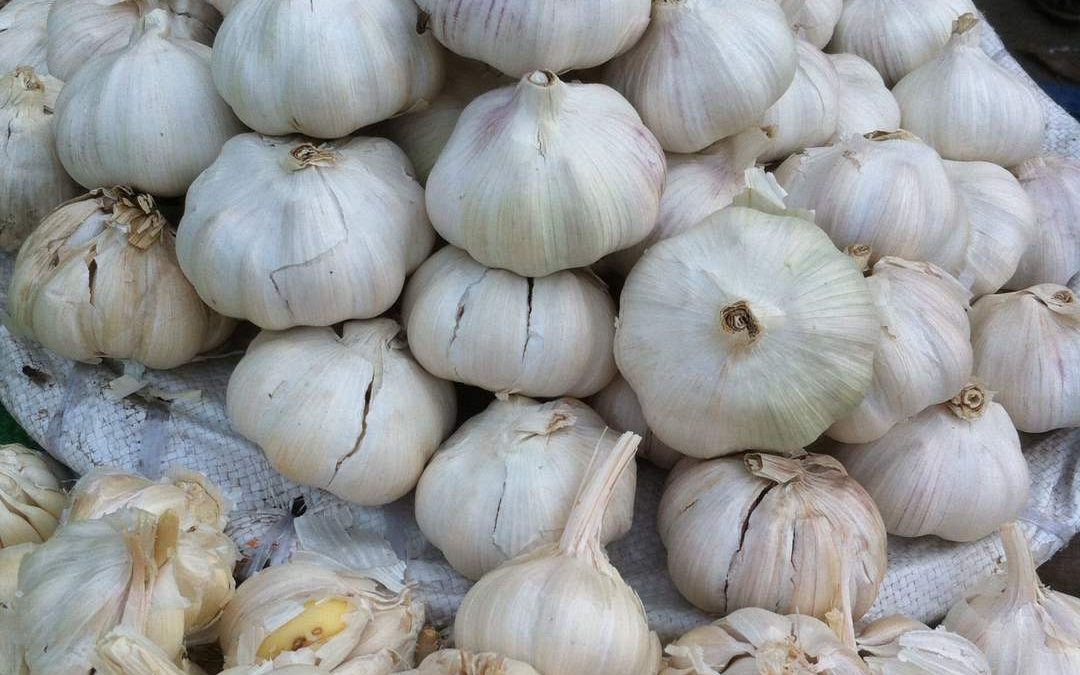There is extensive reference to its medicinal properties of garlic in both the Charaka Samhita and the Sushruta Samhita, ancient Indian medical texts. Both Indians and Chinese regard garlic as an aphrodisiac. It aids digestion, improves respiration, and was used to get rid of intestinal worm infestation (Woodward, 1996). It helps in improving qi—life energy. Charaka Samhita recommends the use of garlic to treat heart disease and arthritis too. Garlic’s effect is also said to be diuretic.
The Ebers Papyrus (c. 1550 BC) prescribes the use of garlic in cases of high blood pressure and clogged arteries. Garlic was also prescribed to alleviate general malaise, and combat infestations of insects, worms, and parasites.
Hippocrates recommended the use of garlic in respiratory ailments, as a cleansing agent, and to treat abdominal growths. Dioscorides recommended the use of garlic to keep arteries clean. Pliny’s Historica Naturalis mentions the use of garlic to improve digestion and to treat insect bites, arthritis, and convulsions.
Before the discovery of antibiotics, garlic was consumed in large quantities, especially during disease epidemics. Its anti-microbial properties were thought to provide protection. In 2002-2003, the SARS epidemic in China killed hundreds of people; garlic was consumed widely, hoping for protection against the virus.
It is a widely-researched species and is a popular herbal supplement cleared for use in the US, Europe, and across the globe. The plant is known to be effective in reducing high blood pressure, showing promise in reducing cardiovascular risk (Ackermann et al., 2001).
Garlic is useful in alleviating atherosclerosis (Berthold et al., 1998). It also tested positive for efficacy against Type 2 diabetes (Ashraf et al., 2005).
The antioxidant properties of aged garlic extract were observed by Dillon et al. (2003). Dorant et al. (1996) observed the spice’s ability to moderate the impact of colorectal cancer. A similar correlation was made in Durak et al. (2003) in prostate cancer patients. Heron et al. (1999) observed that garlic supplements can be used to treat parasitic infections.
Borelli et al. (2007) performed a study that reveals adverse interactions of garlic with certain drugs. Isoniazid used to treat tuberculosis and in birth control pills, the cyclosporine is given after organ transplant, and blood-thinning medications could all be made less effective when garlic supplements are taken by patients.
Helicobacter pylori infect the stomachs of approximately 60% of the world’s adult population (Cave, 1997). This number goes up to 95% in developing countries (Frenck and Clemens, 2003). This infection causes several gastric ailments that range from gastritis, duodenal and gastric ulcers, etc. (Dixon, 1992; and Nomura et al., 1994). O Gare et al. (2008) has studied the effects of garlic oil in a simulated gastric environment due to anti-Helibacter activity. The antibacterial effect on Helicobacter pylori stomach infections was observed by Salih et al. (2003). Both studies claim that garlic oil helped combat the infection.
The plant is rich in vitamins C and B6, magnesium, sodium, potassium, and calcium. The active ingredient isolated from the plant is allicin, along with a few other alkaloids. Allicin is responsible for the pungent odor of garlic.
Fresh garlic is said to be effective against bacteria like Escherichia coli, Salmonella enteritidis, and Staphylococcus aureus. It is topically used to treat fungal infections like ringworm, jock itch, athlete’s foot, etc.
Homeopathy finds the plant useful too. It is part of the Bryonia group of medicine. The drug acts on the intestinal mucous membrane increasing peristalsis. It is used to treat colitis caused by pathological flora in the stomach, dyspepsia, and catarrhal affections. Homeopathy also uses the drug to treat atherosclerosis. The Bryonia group is used to treat tuberculosis.
In naturopathy, garlic is used for its anti-microbial and anti-fungal properties and to treat intestinal worms, fungal infections, etc. Native American tribes and other folkloric medical systems use garlic to treat cold, chest, and lung infections.
More on history, botany, and other uses of garlic here.
